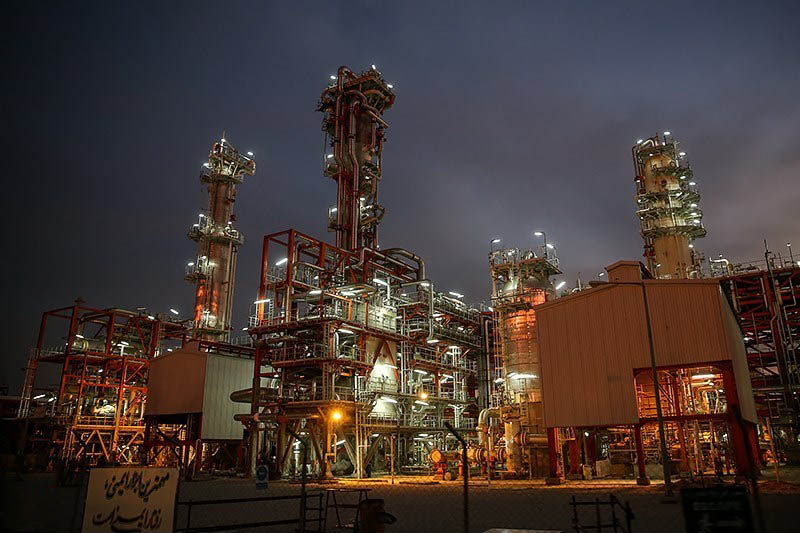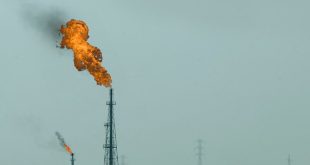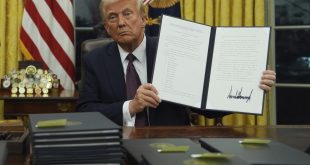Iran holds the second largest natural gas reserves in the world. Despite this advantage, the country controls less than one percent of the world’s natural gas market. Nevertheless, Iran is the third largest gas producer and, over the past few years, has focused on increasing its share of the global gas market. By the end of 2017, according to the National Iranian Gas Company, Iran was producing 800 million cubic meters per day. Iran’s short-term intention is to increase the volume of gas available for export by 365 million cubic meters per day by 2021.
Exporting natural gas takes a back seat in terms of priorities to more immediate economic considerations like boosting investment into oil fields, satisfying domestic consumption, and expanding gas-based industries. Iran has 50 independent gas fields, of which currently only 23 are developed and producing. Iran’s largest gas field at South Pars, with reserves of 14 trillion cubic meters, accounts for around 40 percent of the country’s gas reserves. In 2017, Iran produced 130 billion cubic meters of natural gas from this field. Iran plans to complete Phase 11 in the next two years so that it can produce about 180 billion cubic meters of natural gas annually. But based on estimates from the Ministry of Oil, South Pars will experience a significant drop in pressure, known as the “dew point,” probably around 2023.
In 2015, after the signing of the nuclear agreement, Iranian officials repeated calls for an injection of around $100 billion in foreign investment into the country’s oil, gas, and petrochemical sector. Most of Iran’s oil wells have entered the second half of their lives. With 8 percent of oil production dropping automatically year on year, Iran desperately needs technology and capital from foreign countries just to stabilize its oil production. The U.S. ban on companies engaging in dollar deals with Iran, however, means that large financial institutions risk heavy fines from the Treasury Department, thus hampering any progress in Iran’s ability to gain such investments through formal and legal restrictions.
Iran signed major agreements with foreign companies in the natural gas sector, including contracts for the development of the 11th phase of the South Pars field with both French and Chinese partners designed to increase the production capacity of the field by 56 million cubic meters per day. After the U.S. withdrawal from the nuclear deal, however, the French company Total abandoned the contract, and China National Petroleum Corporation officials stated that only they would remain in Iran’s natural gas sector. However, Chinese companies do not have a good record in Iran’s oil industry. For instance, several Chinese companies have delayed work in the Azadegan Fields for no good reason. Also, Chinese firms with interests in the United States or in U.S.-funded projects may be reluctant to invest in Iran.
According to Mohammad Hassan Adeli, former secretary general of the Gas Exporting Countries Forum, sanctions are one of the main reasons for Iran’s failure in its gas export policy. However, other factors include the long process of achieving consensus on big decisions in Iran and a prevailing opinion among Iranian policy makers that gas should only be consumed domestically or turned into petrochemical products.
Iran has plans to increase its export of natural gas to other countries. For instance, Iran and Pakistan began work on a pipeline in March 2013 that would send 1.5 million cubic meters per day natural gas to Pakistan. However, US sanctions against Iran may force Pakistan to seek a less controversial alternative. Iran is also eyeing the European market. But gas exports to Europe face two major problems. Firstly, traditionally, Russia has dominated this market and Iran cannot hope to play as large a role as Russia in supplying gas to Europe. Second, in order to export Iranian gas via pipeline to Europe, Iran must secure transit through several intermediary countries.
Given recent developments in the energy market—not to mention the sanctions imposed by the Trump government—attracting foreign capital and technology to the Iranian energy industry, especially the natural gas industry, carries none of the optimism of previous years.
Foreign private companies have enough financial resources to make a splash in the Iranian market. But attracting foreign investment requires a suitable legal framework and an efficient and fast decision process, as well as political stability. In addition, Iran needs to revise its foreign policy and solve its issues with neighbors as well as the West. With neither foreign technology nor capital, Iran will not be able to produce more oil and gas to export to neighbors, let alone export to the EU.
At present, major natural gas producers such as Russia and the United States have made huge investments in their own natural gas sectors. If these major natural gas producers control the regional and world gas markets, Iran is likely to struggle to find importers. Boosting Iran’s share of the market from one percent to 10 percent, as the government would like to do, is possible only with foreign investment, which requires a reduction of political risk in the country and an effort to eliminate tension with neighboring countries.





